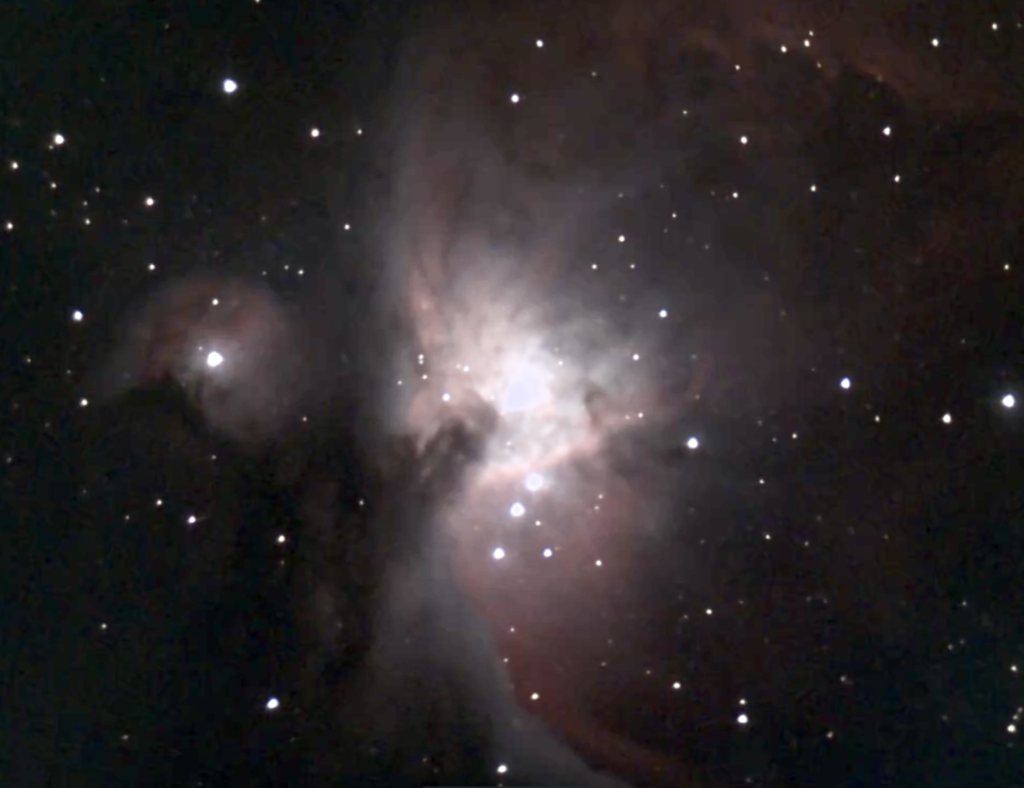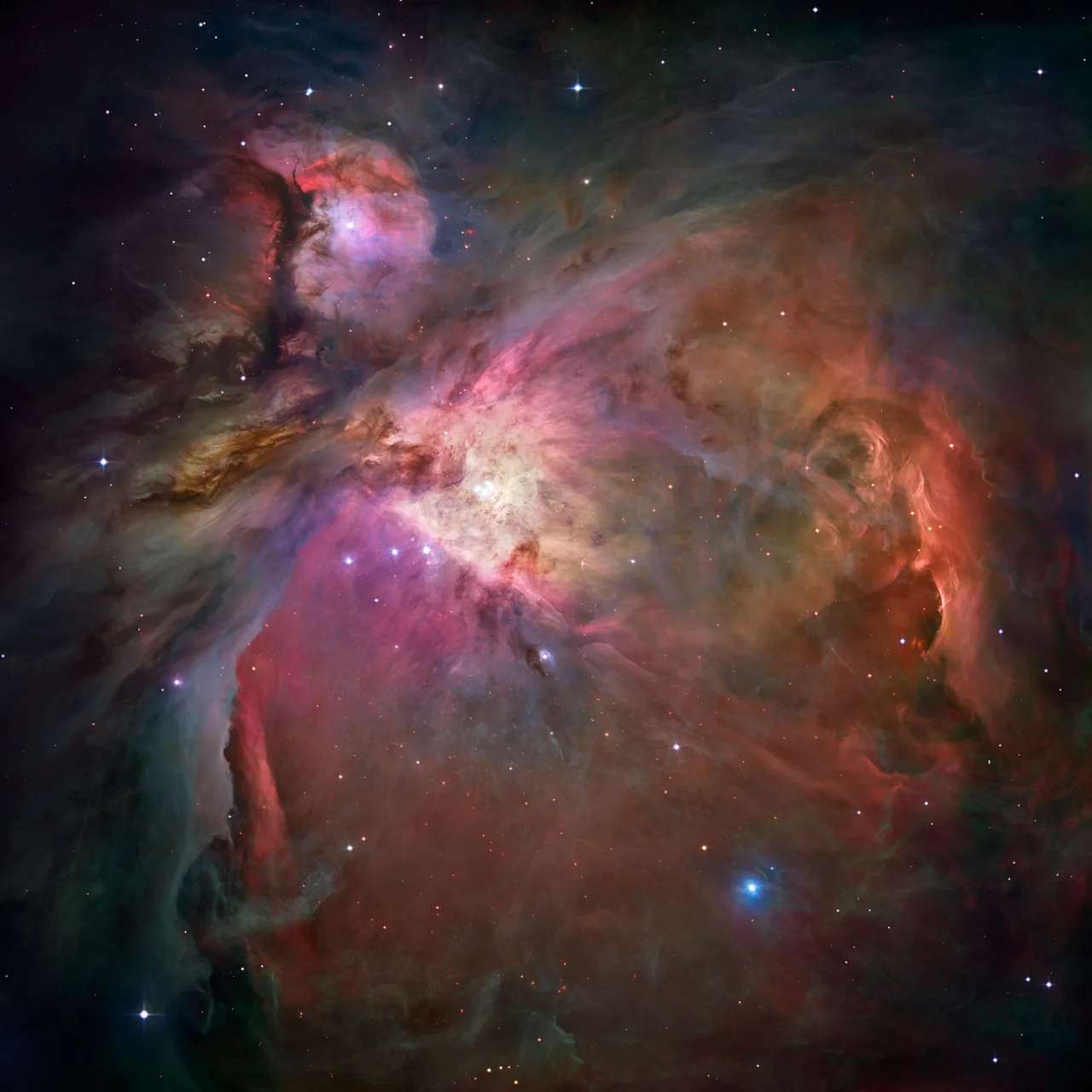M42 | NGC 1976 | Orion Nebula | Orion | 1,500 Light Years Away
Our Best Image

Messier 42, also known as the Orion Nebula, is a spectacular emission nebula situated in the sword of the constellation Orion. First recorded by the Persian astronomer Abd al-Rahman al-Sufi in the 10th century, it was later cataloged by Charles Messier in 1769. Positioned approximately 1,344 light-years away from Earth, the Orion Nebula is one of the most scrutinized and photographed celestial objects in the night sky.
This stellar nursery is home to a vast region of gas and dust, where new stars are actively forming. At the heart of the nebula lies the Trapezium Cluster, a group of young, hot stars illuminating the surrounding gas clouds. The intense ultraviolet radiation from these stars causes the nebula to glow brightly, creating a breathtaking celestial display that is visible to the naked eye and a favorite target for both amateur and professional astronomers.
Observations of Messier 42 across various wavelengths, from infrared to radio waves, provide valuable insights into the processes of star formation and the dynamics of stellar nurseries. The Orion Nebula stands as a testament to the ongoing cycle of stellar birth and death, showcasing the beauty and complexity of the cosmos. Its proximity and distinct appearance make it an iconic object for stargazers and a crucial subject of study for astronomers seeking to unravel the mysteries of our universe.

